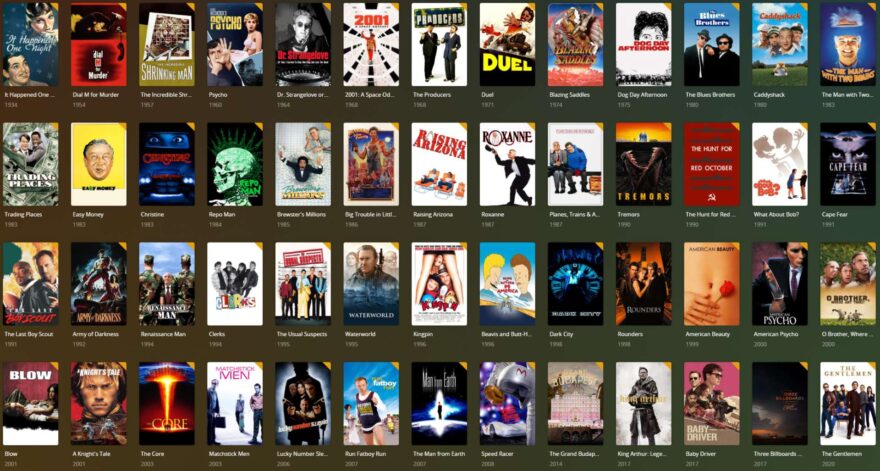Upgrading My Plex Server With a new TerraMaster NAS and Seagate IronWolf Pro Drives!
Peter Donnell / 2 years ago
Performance
While RAID5 does offer 4x read performance in a five-drive configuration, keep in mind that you are still limited by the networking speed too. Most of us don’t have 10GbE in our homes or even our businesses. Some have 2.5GbE on their PC, or perhaps even a single 2.5GbE port on the router, but again, it’s unlikely your whole network supports it. The TerraMaster makes use of 2 x 1GbE ports, and as such the speeds are easily maxed out over the network. Ideally, you can expect up to 130 Mbps over a single port, with a little lower accounting for caching and other network traffic.
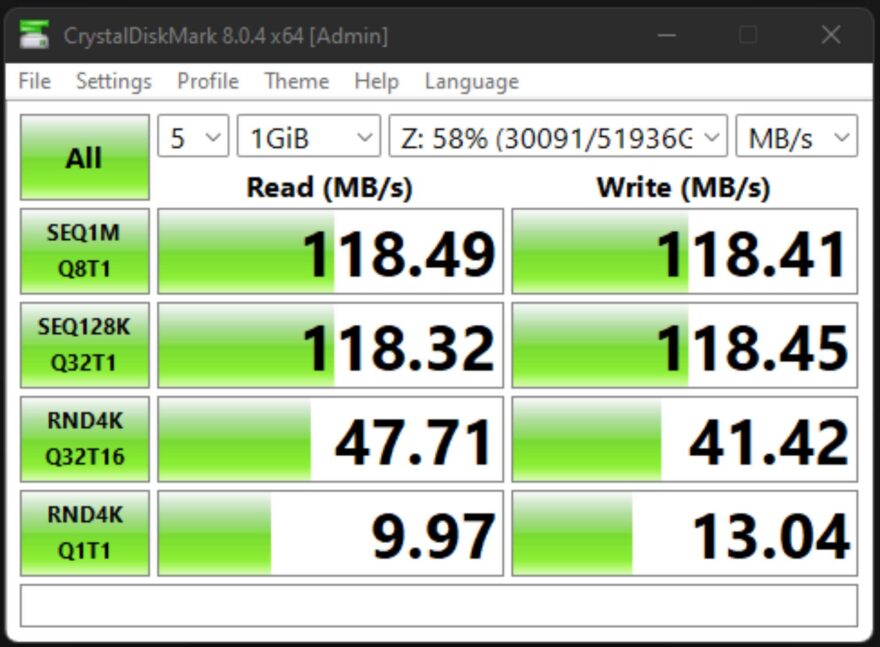
Because I’m using this as a Plex server, I’m not really trying to move files in a hurry. While a 4K movie may take many gigabytes, moving the whole movie in a file transfer isn’t really the goal.
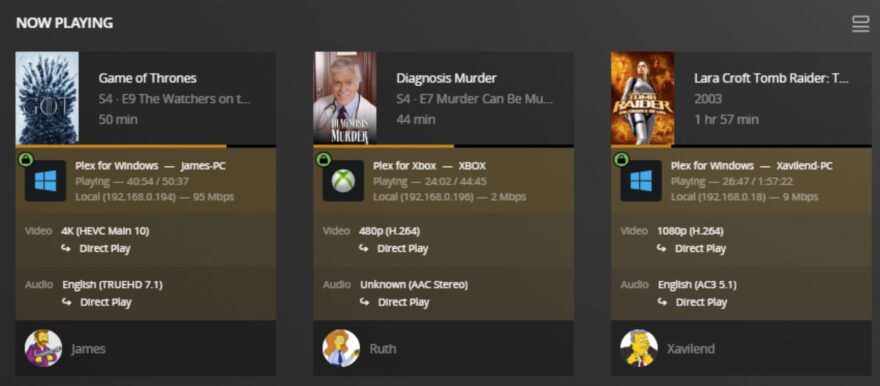
Plex will simply stream and buffer the data in appropriate chunks over the course of the movie, so generally, the strain on the network is lower than it would be if I simply copied the file from the NAS to the device all at once.
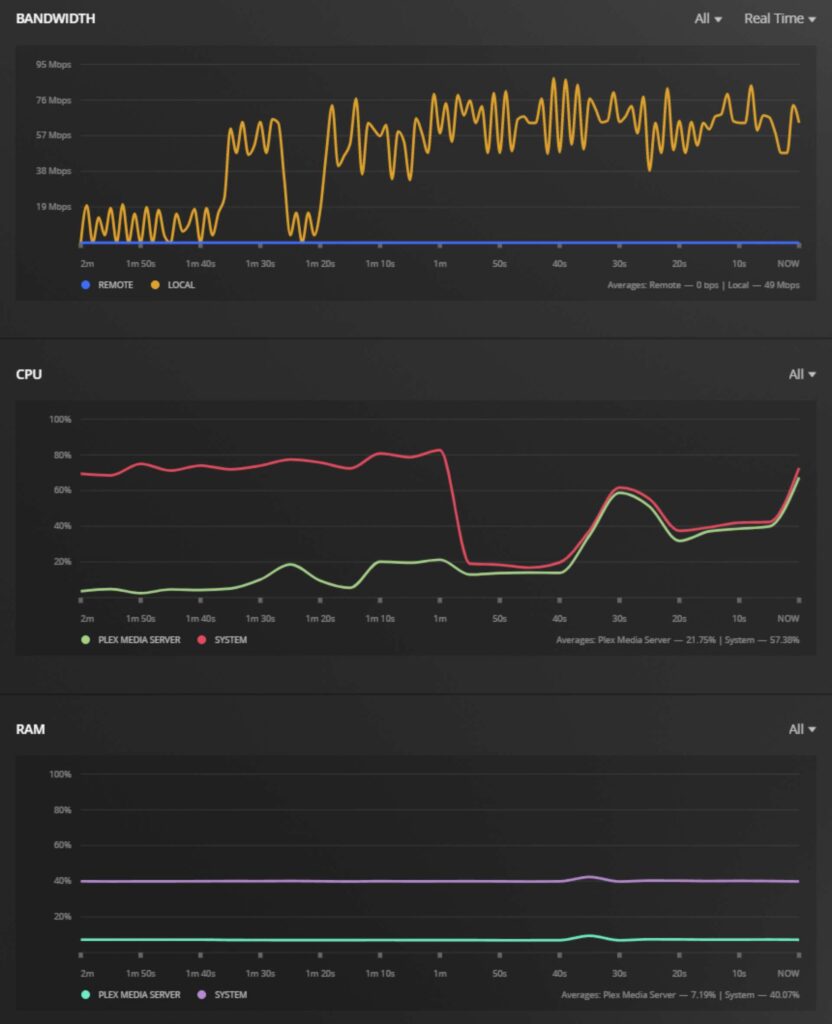
However, I am still limited by the 1GbE port, even if the drives can read at nearly 4x that speed while working together. We’re set up for seven users, but after a month, it seems there are rarely more than three people using it at any one time. However, I’ve yet to see this result in any kind of performance issue regardless of what media is being consumed. I manged to run 9 episodes of the Simpsons, with zero issues in regards to stutters or buffering. However, this was getting to the network speed limit, and will vary if your show uses a higher or lower bitrate.
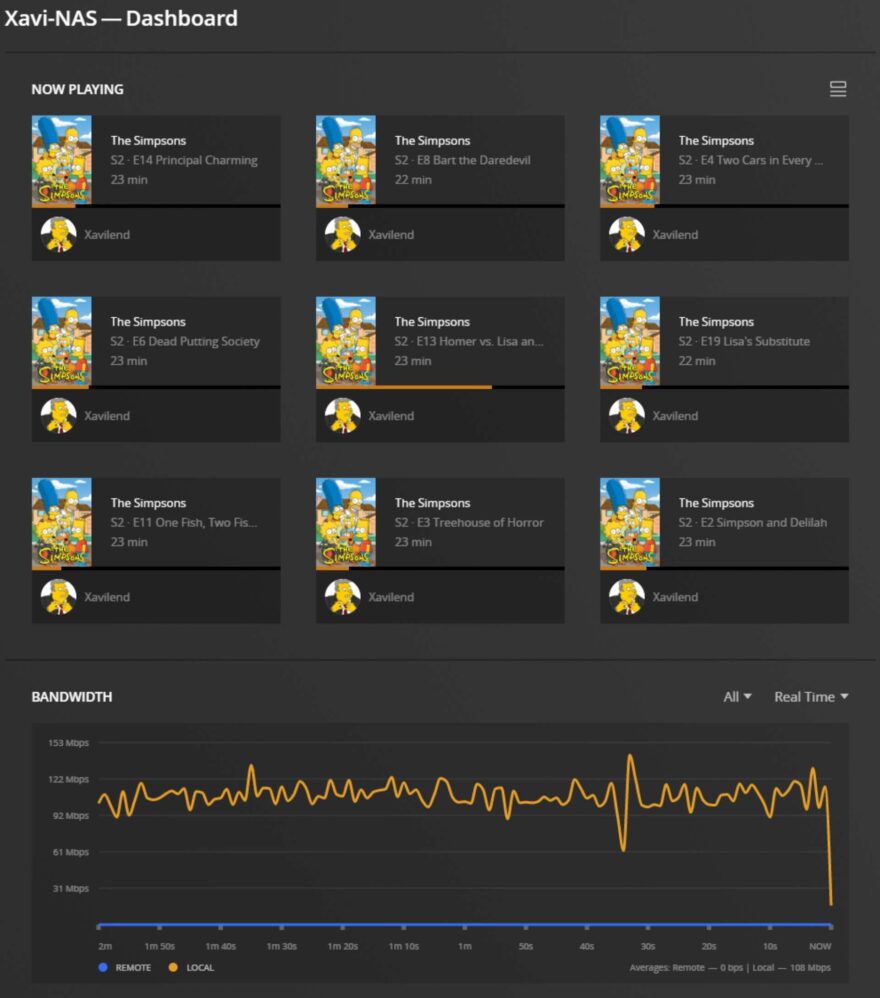
As you can see though, the CPU and RAM usage were pretty steady throughout.
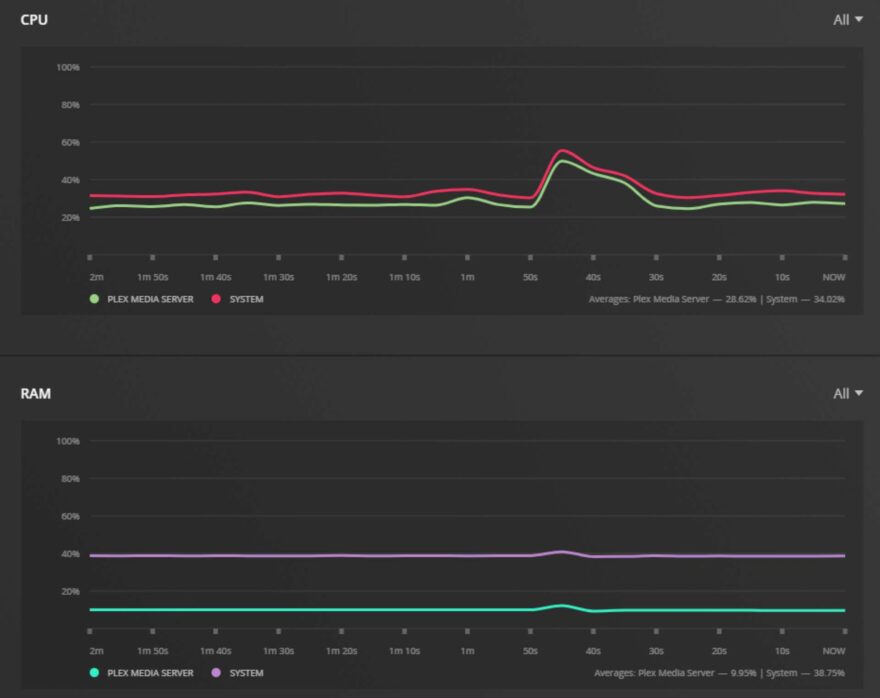
The RAID5 setup worked well loading multiple files, but similar 5mbps bitrate struggled when loading the same movie. Five worked great, but it started freezing up at six, so if you and all your family plan on watching the same movie at the exact same time, perhaps a couple of you would want to share a screen. That being said, this is still bloody impressive.
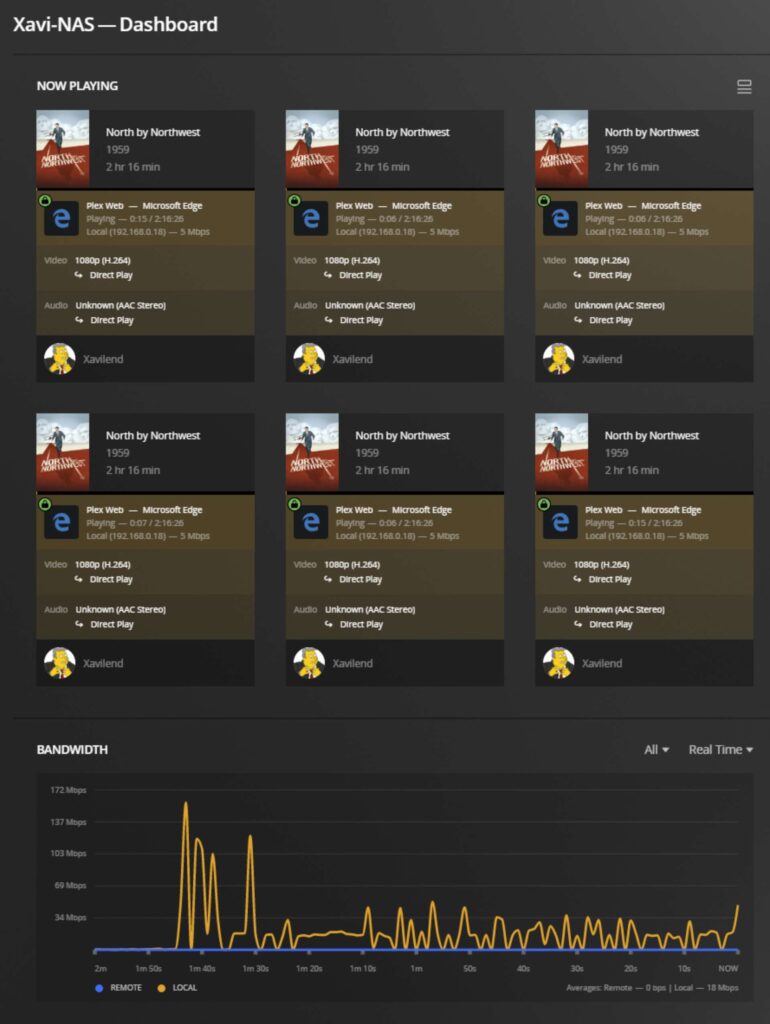
The NAS seems pretty capable of doing on-the-fly transcoding. As per my settings, it’s set to transcode incompatible media to 720p and audio to AAC. This could be if the output device doesn’t support the resolution, or any of the codecs. Typically this seems to be for the PlayStation 5, which has truly crap Plex support, as Sony limit much hardware access to application developers on that system. The Xbox Series X seems to work great though, offering a much broader range of codecs and capabilities for Plex. Taking two 4K movies and putting them through at 720P certainly stressed the CPU, and the innitial buffer took a good 30 seconds on each, but honestly… not bad for a pokey little dual-core CPU.
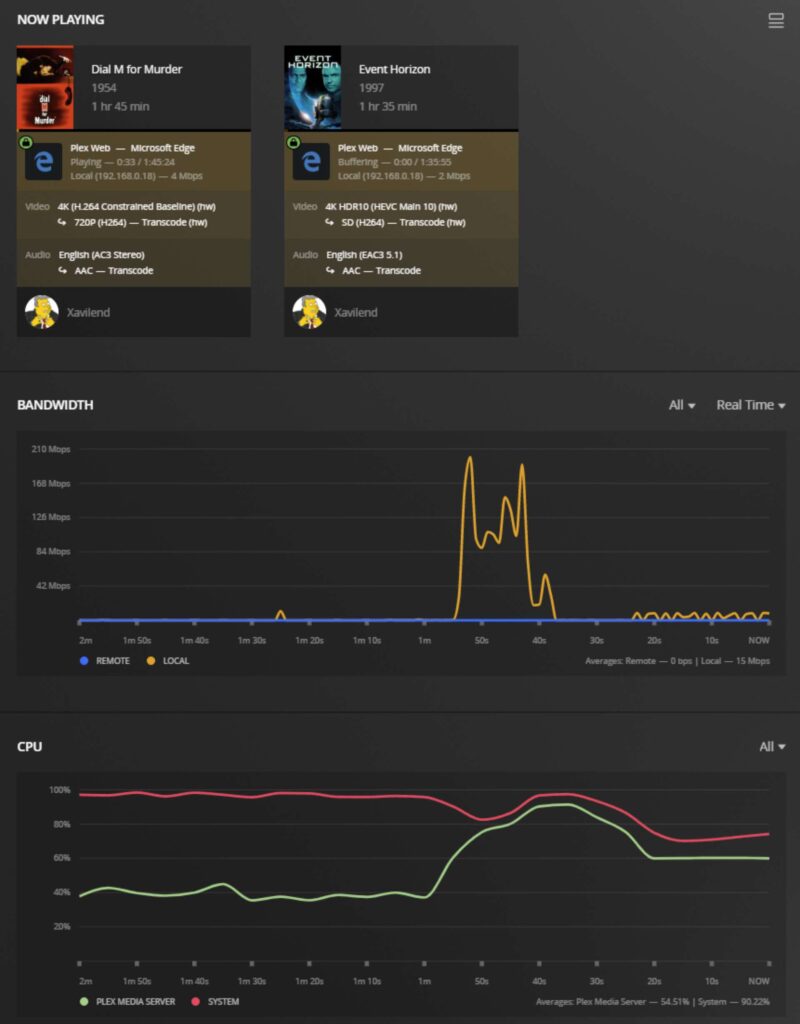
The storage capacity is certainly a big upgrade. Coming from a pair of 6TB drives, stepping up to a 5 x 14TB RAID5 configuration is crazy. The final capacity is sitting around almost 50TB. But what does 50TB get you these days? Well, quite a lot it seems.
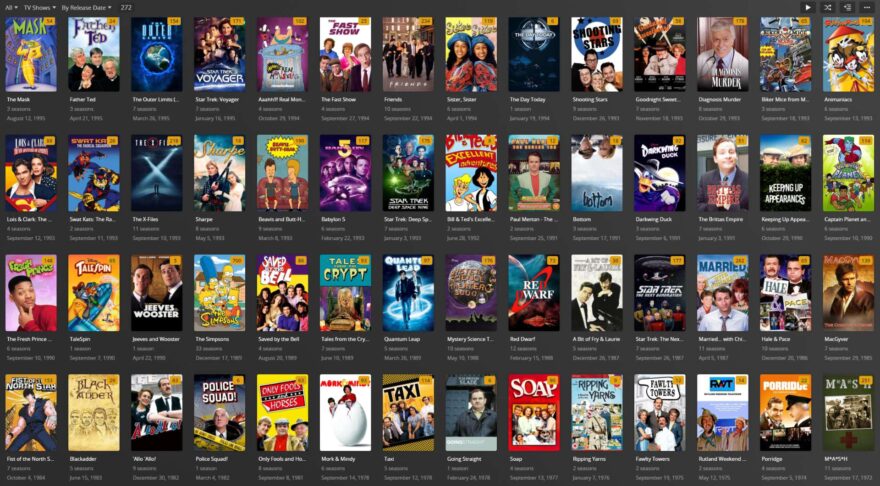
Obviously shows of various ages and resolutions means a broad spectrum of file sizes here. However, a pretty broad family library of movies, music TV and more comes in at just 28TB total, a little over half the capacity of the NAS, leaving plenty of room to backup your phones, computers, games and much more beyond.
The Plex Collection… So Far!
- 1338 HD movies @ 2600 Hrs = 7.8TB
- 139 4K Movies @ 151 Hrs = 1.4TB
- 332 TV Shows @ 10400 Hrs = 16.75 TB
- 9 4K TV Shows @ 140 Hrs = 2.1 TB
- 1613 Music Albums @ 2000 Hrs = 230GB
